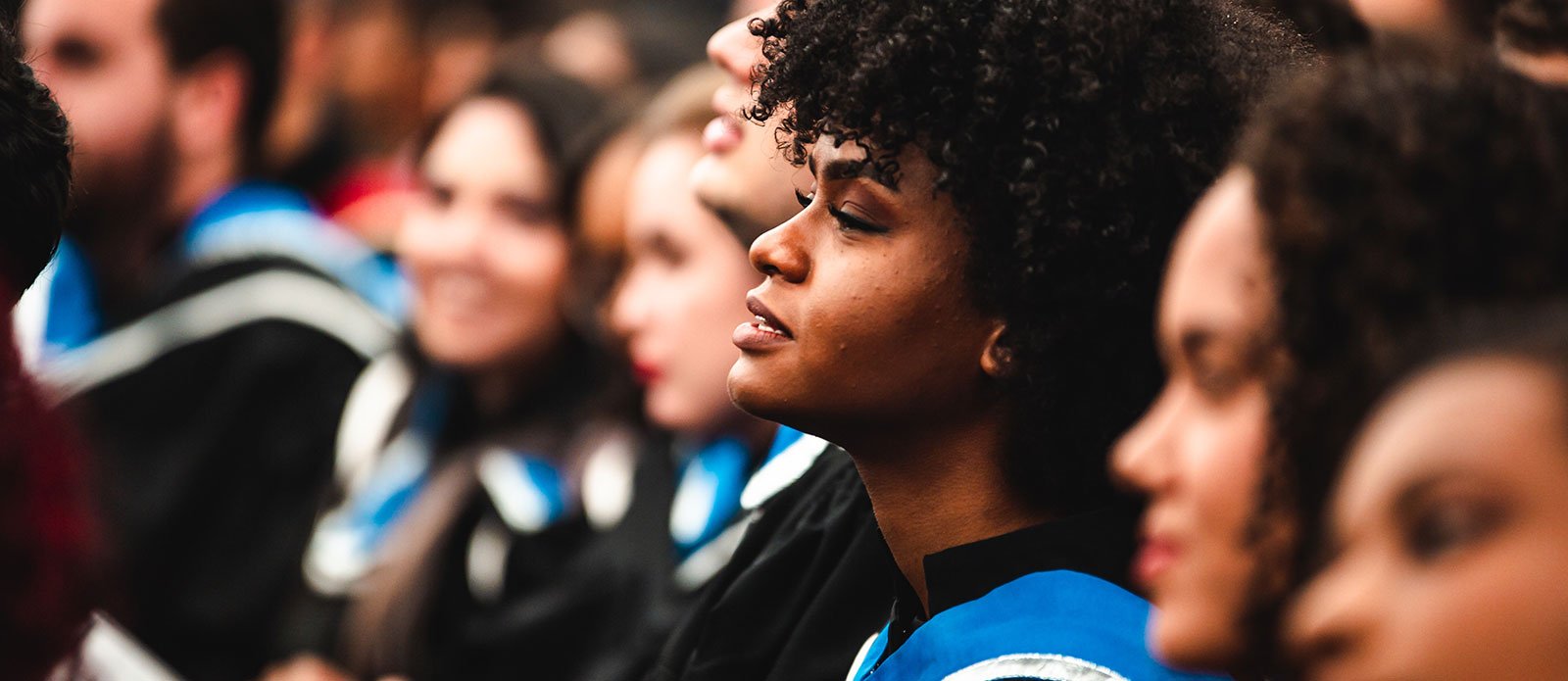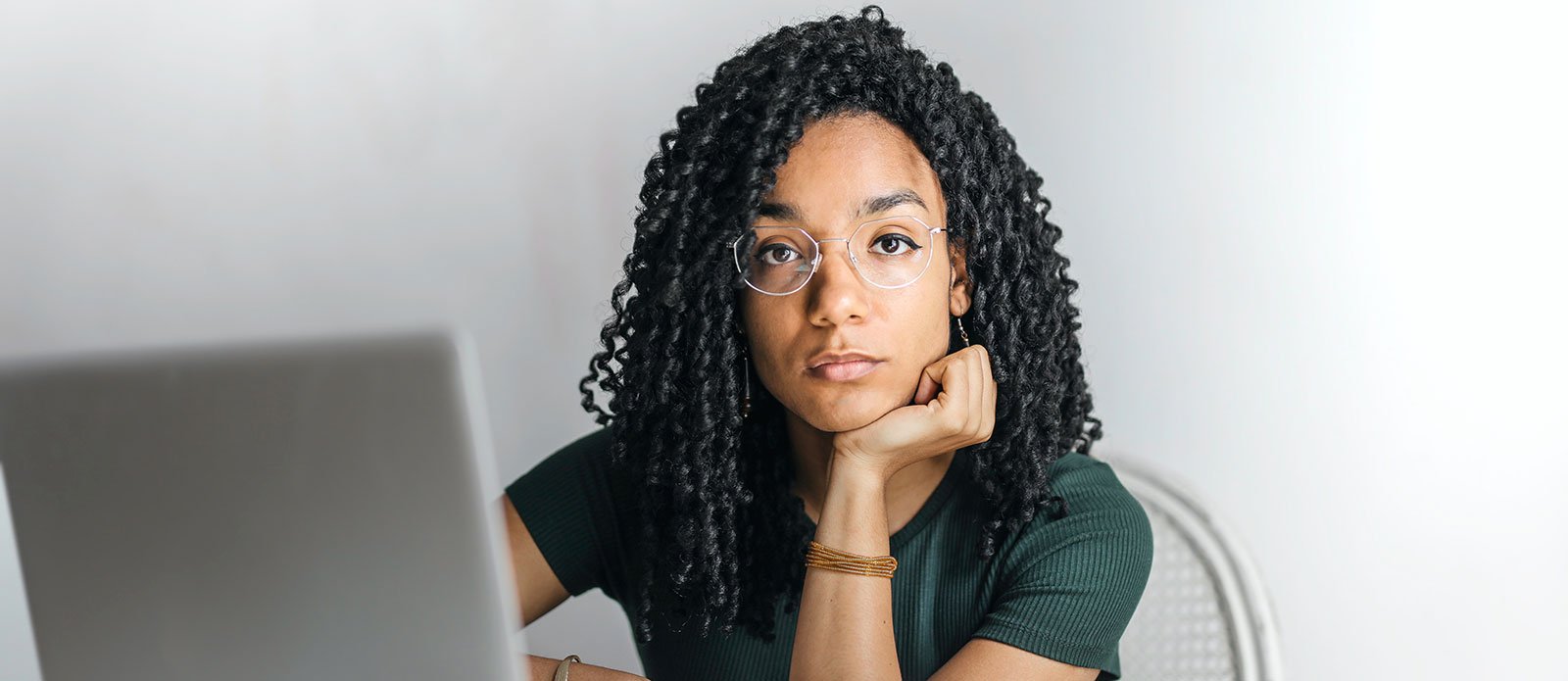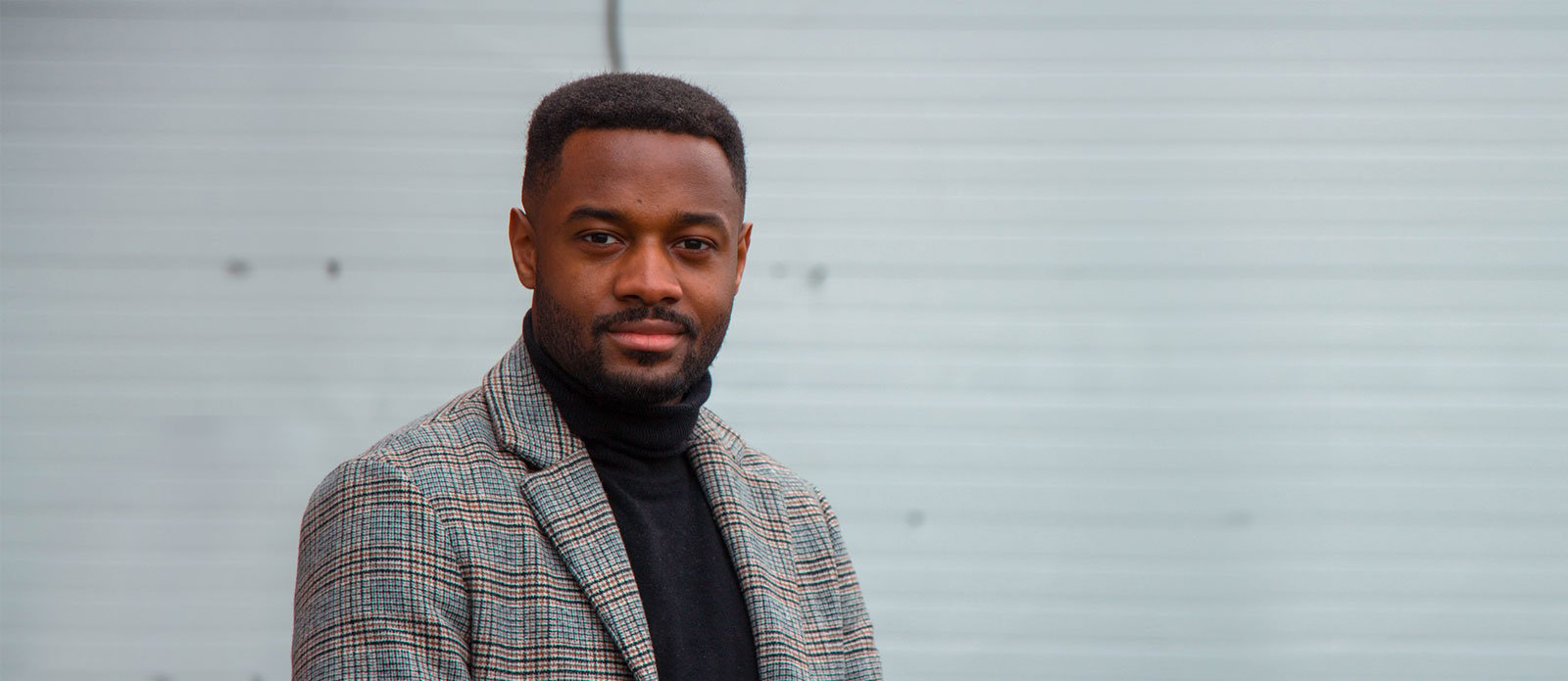
The sudden shutdown of campuses across the country midway through the spring semester took a serious toll on students, as instruction abruptly moved from face-to-face to online.
Not surprisingly, the severity of the impact of the coronavirus pandemic varied widely across demographic and racial boundaries, with those in lower-income brackets suffering the most.
Lack of reliable internet service denied millions of students access to online learning. Stay-at-home mandates created housing, childcare, and other serious, day-to-day financial challenges that added to the strain, creating a monumental disruption in education that some claim rendered this past semester a “throw-away” term.
One group hit particularly hard was Black college students. Whether enrolled in large public or private universities, local community colleges or Historically Black Colleges and Universities (HBCUs), Black college students were faced with a crippling burden that amplified what was for many an already difficult endeavor. That burden threatens to become even more onerous as plans for fall campus re-openings emerge.
Underlying Academic Inequities
A quick look at a handful of key factors that existed well before the pandemic hit illustrates some of the key components driving this dilemma.
- According to Pew Research, 34% of Black Americans don’t have high-speed internet, and 42% are without personal computers.
- Brian Bridges, vice president of member engagement and research at the United Negro College Fund (UNCF), reports that Black college students arrive on campus already behind. “Many Black students lack the resources needed to get into college and to succeed there. Only 57% of Black students have access to the full range of math and science courses necessary for college readiness, compared to 81% of Asian American students and 71% of white students.”
- These pre-enrollment inequities manifest themselves in graduation rates as well, even during “normal” times. Once enrolled in four-year public institutions, UNCF estimates that 45.9% of Black students complete their degrees in six years—the lowest rate compared to other races and ethnicities. Black men have the lowest completion rate at 40%.
Beyond Academics – Employment and Health

These long-existing challenges were met with an equally devastating, if not greater, blow from the COVID-19 pandemic that struck Black people more seriously than any other racial demographic.
From measurable inequities in unemployment filings to a shocking disparity in infection and death rates, COVID-19 left Black college students with devastating challenges that will extend into the fall and beyond.
- UNCF also reports that 65% of Black college students are “independent, meaning they must balance pursuing a degree with full-time work and family responsibilities,” a factor that exacerbates chances of success during hard economic times. And those times have come: according to the U.S. Bureau of Labor Statistics, Black unemployment has more than doubled, surpassing 16% in April.
- The Centers for Disease Control and Prevention (CDC) recently released data under a freedom of information act showing that “Black and Latino people are three times as likely to become infected as their white neighbors and nearly twice as likely to die from the virus as white people.”
- Bre-Ann Slay, a doctoral student at the University of Denver’s Graduate School of Professional Psychology, puts this impact in even starker terms on a state-by-state level: “In Illinois, 43% of people who have died are Black, although the race makes up only 15% of the population. In Louisiana, 70% of the state’s coronavirus deaths were Black Americans in a state with a 32% population of Black Americans.
When unemployment and the need to self-finance their education is combined with a dramatically higher risk of infection, serious illness and death, it isn’t difficult to see that these disparities in Black college student education are bound to widen.
Immediate Impact Masks Ongoing Threat
The initial impacts of campus shutdowns on Black students – as disruptive as they were – actually hides what lies ahead. Like all students, Black college students were already enrolled and studying before the mid-term move to remote instruction, which means they had already paid for the semester. That’s not expected to be the case going forward.
One indication of the rising financial toll on Black students lies in recent data on summer internships. According to a poll given in April by College Reaction, “nearly three-quarters of students with internships or post-graduation plans said their plans had been canceled, made remote, or delayed.” A similar survey by the National Association of Colleges and Employers (NACE) reported nearly 22% were revoking offers to summer interns.
With many Black students already strapped financially, the loss of these internships – combined with an increased need for Black students to help out their families financially – further lowers the odds that they will be able to resume their education in the fall.
HBCUs to the Rescue?

One may assume that some of this burden could be lessened by the country’s 107 HBCUs that enroll 228,000 primarily Black students annually. Many of these students come from poor households, and more than half of these students are among the first in their families to attend university. Might these institutions help alleviate the challenges faced by at least some Black students?
The short answer is ‘probably not.’
HBCUs make up only three percent of the country’s colleges and universities, and enroll only 10% of all Black students. More importantly, HBCUs are facing an even harsher financial impact from the COVID-19 pandemic than other public or private institutions.
Most HBCUs receive little or no state support, depend more heavily on enrollment to fund operations, and have smaller endowments than other universities. Already struggling financially before the campus shutdowns, some HBCUs are not expected to survive if some form of significant financial aid is not rendered.
The challenges faced by many HBCUs as a result of the COVID-19 pandemic strike a particularly hard blow to the success rates for Black college students.
Even though Black students enrolled at HBCUs represent just 10% of all Black students, they graduate 20% of all Black college graduates. HBCUs also produce 42% of the country’s Black engineers and 80% of all Black judges. Even more illustrative, 40% of all Black members of Congress are graduates of HBCUs.
This phenomenal success rate of alumni makes the viability of HBCUs a critical area of focus when considering the make-up of any financial assistance packages currently being considered by public and private entities.
The Path Ahead
It is clear that something needs to be done to stem this pending decline if Black college students are to reverse the impact of these inequities – those that existed before COVID-19 and those imposed in unequal measures by the pandemic.
A glimmer of hope is emerging in the form of financial aid to students themselves, with some colleges reducing tuition and others devoting most or all of their Coronavirus Aid, Relief and Economic Security (CARES) Act funding to reducing costs – including refunds for housing and meal plans – but the first round of CARES Act funding wasn’t nearly enough to make either colleges or students “whole.”
Some private businesses and philanthropists are stepping up, particularly when it comes to HBCUs. Thanks to a gift of $40 million from philanthropist Patty Quillin and her husband, Netflix CEO Reed Hastings, Spelman College can now offer full four-year scholarships to 200 first-year students over the next 10 years.
But private funding won’t be enough to significantly change the outlook for Black students across the country – significant financial relief and longer-term support for students and their colleges is required. And that support needs to account for the disproportionate impact felt by Black college students versus their white counterparts.
Whether that comes in the form of targeted grants and other financial aid to the students themselves, increased state and federal funding to public and private institutions or – ideally – both, the time has come for Congress and state legislators to act.
Bobbie Knight, President of HBCU Miles College in Alabama, put it in distinct terms: “Our financial issues are really just beginning.”
Need help transitioning courses online or branding new initiatives? Contact UNINCORPORATED today.









